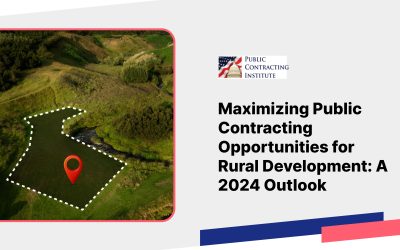In early October, this blog explained that The Supreme Court recently considered the Freedom of Information Act (“FOIA”) exemption at 5 USC § 552 (b)(4), confidential commercial information, and narrowed the basis on which an agency could withhold information . The blog was titled “Supreme Court Eases The Definition Of Confidential Commercial Information Exempt From FOIA. The Supreme Court case is Food Marketing Institute v. Argus Leader Media, 139 S. Ct. 2356 (2019). The Department of Justice issued a step-by-step guide for agencies to determine if confidential or financial information is confidential under Exemption4 of the FOIA.
Background. As noted in the blog, the Freedom of Information Act (5 USC § 552) requires that upon request, an agency shall “shall make [] records promptly available to any person.” However, there are nine exemptions under which an agency may deny the requested records, as follows: (All are in section (b) of the FOIA). The pertinent exemption from release is 5 USC § 552 (b)(4) which exempts “trade secrets and commercial or financial information obtained from a person and privileged or confidential.”
The Supreme Court in Food Marketing narrowed the basis on which an agency may withhold information. Previously, most courts had held that contractors must show that the disclosure of the information would cause “substantial competitive harm.” See Nat’l Parks & Cons. Assn. v. Morton, 498 F. 2d 765, 770 (DC Cir. 1974). Food Marketing rejected this test, indicating that the statutory language could not support the requirement for a competitive harm determination. The Court reviewed the plain meaning of the term “confidential” and found two potential conditions: (1) information customarily kept private or at least closely held; and (2) information disclosed when the receiving party provides some assurance that it will remain secret. The Court concluded that Exemption 4 imposed no showing of “harm” whatsoever.
The definition that the Supreme Court endorsed is substantially broader, and much easier for a government contractor to meet than the “substantial competitive harm” test previously used in Nat’l Parks.
On October 7, 2019 the Department of Justice issued a “Step-by-Step Guide for Determining if Commercial or Financial Information Obtained from a Person is Confidential under Exemption 4 of the FOIA. The three step guide is as follows:
- Does the submitter customarily keep the information private or closely-held? (This inquiry may in appropriate contexts be determined from industry practices concerning the information.)
- If no, the information is notconfidential under Exemption 4.
- If yes, answer question 2.
- Did the government provide an express or implied assurance of confidentiality when the information was shared with the government?
- If no, answer question 3.
- If yes, the information is confidential under Exemption 4 (this is the situation that was present in [Food Markeint v.]Argus Leader).
- Were there express or implied indications at the time the information was submitted that the government would publicly disclose the information?
- If no, the information is “confidential” under Exemption 4 (the government has effectively been silent – it hasn’t indicated the information would be protected or disclosed – so a submitter’s practice of keeping the information private will be sufficient to warrant confidential status).
- If yes, and no other sufficient countervailing factors exist, the submitter could not reasonably expect confidentiality upon submission and so the information is notconfidential under Exemption 4.
Takeaway: Agencies should use the Step-By-Step guide in FOIA determinations, and contractors who want to keep their information exempt under FOIA (b)(4) should ensure that they fully comply with the guide’s direction.
For other helpful suggestions on government contracting, visit:
Richard D. Lieberman’s FAR Consulting & Training at https://www.richarddlieberman.com/, and Mistakes in Government Contracting at https://richarddlieberman.wixsite.com/mistakes

